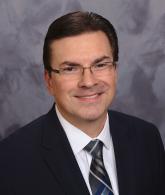CMS’ new emergency preparedness rules
Skilled nursing facilities (SNFs) and all other providers who are reimbursed by the Centers for Medicare and Medicaid Services (CMS) will be required to comply with new emergency preparedness regulations by November 15, 2017. The rules, approved in late 2016, include far more than having an emergency plan written down and stored on a bookshelf.
Evaluating providers for compliance will become part of the survey process, and any non-compliance must be rectified like any other deficiency, noted the Oct. 28, 2016 CMS announcement.
These significant changes in emergency preparedness regulations for CMS-regulated healthcare facilities have been a long time in coming. The highlights of the new regulations can be broken down into four specific areas of compliance that includes the following:
- Development of an Emergency Plan based on a risk analysis assessment using an all-hazards approach
- Policies and procedures
- Communication plan
- Training and testing
For the purposes of this article, I will focus on these elements of the new regulations as they pertain to SNFs. For additional clarification, CMS has developed a comprehensive table that further explains the requirements for each of the 17 provider types affected by these regulations.
The emergency plan
The new regulations will require SNFs to develop and maintain an emergency plan that is based on a risk analysis utilizing an all-hazards approach to identify potential risks and perils that can impact a facility both internally and externally. The purpose of the risk assessment is to establish an integrated system for emergency planning that not only focuses on the hazards that can affect the operation of the facility but also assesses capacities and capabilities. In other words, creating an emergency plan that focuses only on obvious or location-centric threats like tornadoes, hurricanes and earthquakes won’t be good enough.
Good emergency and disaster planning concepts should focus on all of the potential threats and perils that can impact an operation, not just the common ones. By conducting a Hazard Vulnerability Assessment (HVA), a facility can reasonably identify the types of events it needs to prepare for and incorporate these contingencies into its emergency plan. Several online HVA tools are available in the disaster planning sections of many state nursing home associations’ websites, including this one hosted by the California Association of Health Facilities (CAHF).
Additionally, the risk assessment must focus on capacities and capabilities. Instead of just identifying threats, the assessment needs to address a SNF’s ability to remain operational during an emergency or disaster to help ensure the continuation of services. While there are many tools available to address potential hazards like fire, flood, power failure, tsunami, violence, civil disturbance and a long list of perils illustrated within a HVA tool, the process to assess capacities and capabilities is not quite as standardized.
Providers will need to analyze their resident populations, staffing capacities and other operational capabilities to determine specific needs and vulnerabilities as well as their capacity to provide services during an emergency in accordance with their own unique circumstances. Consequently, a facility will need to take a customized approach to assess capacities and capabilities and incorporate this information in the emergency plan, since a standardized tool to perform this element of assessment is not readily available.
Once the assessment process is done, providers can develop their emergency plan based on all the information on threats and the capacity to handle them. The utilization of an all-hazards approach in an Emergency Plan means some type of standardized method of managing these critical events must be utilized.
During my days in the fire service, an all-hazards approach began to evolve back in the 1980s when fire departments around the nation started to incorporate the Incident Command System (ICS) into their operations. Having a standardized management model like the ICS integrated into an emergency plan will help a provider manage any emergency, regardless of the root cause of the event through an all-hazards approach. To help long-term care providers embrace and utilize ICS in their specific environment of care, a derivative of ICS known as the Nursing Home Incident Command System or NHICS is also available online.
It clearly makes sense for emergency plans to be developed using an all-hazards approach. However, in my experience as a consultant and prior to the publication and enforcement of the new CMS regulations, I can tell you that risk assessment has not been a routine part of the long-term care community emergency plans I have reviewed in the past.
Policies and Procedures
CMS will require that policies and procedures be created and implemented based on the findings of the risk assessment and the development of emergency plan. These policies and procedures must be reviewed at least annually and updated as needed. The information contained in the policies and procedures must be very specific and must address the provisions of subsistence needs such as food, water and medical supplies for staff and residents who shelter in place during in emergency situations.
Other highlighted area of policies and procedures development includes the following:
- Alternate sources of energy to maintain temperatures to protect resident health and safety, safe storage of provisions, emergency lighting, fire detection, extinguishing and alarm systems, and sewage and waste systems.
- A system to track the location of on-duty staff and sheltered residents in the LTC facility’s care during and after emergency.
- If on-duty staff and sheltered residents are relocated during emergency, facilities must document the specific names and location or the receiving facility or other locations.
- Safe evacuation includes: care and treatment of evacuees; staff responsibilities; transportation; identification of evacuation location(s); primary and alternate means of communication with external sources of assistance.
- Means to shelter in place for residents, staff, volunteers who remain in the LTC Facility.
- System of medical documentation that preserves, resident’s information, protects confidentiality of resident information, and secures and maintains the availability of records.
- Use of volunteers in an emergency or other emergency staffing strategies, including the process and role for integration of state or federally designated health care professionals to address surge needs in emergency.
- Role of the LTC facility under 1135 waiver in the provision of care and treatment at an alternate care site identified by emergency management officials.
My friend and colleague, Jocelyn Montgomery, Director of Clinical Affairs and Emergency Preparedness at the California Association of Health Facilities (CAHF) and Chairperson of the American Health Care Association’s Emergency Preparedness Committee, has developed an excellent summary document that highlights all the new requirements and includes some interpretive notes and resources that can help ensure compliance.
Communications Plan
Under the new regulations, providers will be required to develop and maintain an emergency preparedness communications plan that complies with federal state and local laws. This means that a specific plan must be developed to effectively communicate during an emergency or disaster within the facility to protect patient health and safety as well as communicate with other stakeholders including:
- Other health care providers
- State health departments
- Local health departments
- Emergency management systems and agencies
The communications plan needs to identify primary and all alternate modes of communications along with detailed contacts lists for the following:
- Residents
- Residents’ family members/responsible parties
- Staff
- Providers of all essential services, including supplies, equipment, transportation and other vendors and contractors
- Residents’ physicians
- Other LTC facilities
- Other healthcare providers
- Emergency Management Agencies (Federal, state, tribal, regional and local)
- Ombudsman
The communication plan must also provide detailed information on the following:
- Method for sharing information and medical documentation for residents under the LTC Facility’s care, as necessary, with other health care providers to maintain continuity of care
- Means to release resident information in event of evacuation as permitted under 45 CFR 164.510(b)(1)(ii)
- Means of providing information about general condition and location of residents under 45 CFR 164.510(b)(4)
- Means of providing information regarding LTC facility’s occupancy, needs, and ability to provide assistance, to the authority having jurisdiction or Incident Command Center or designee
- Method of sharing information from emergency plan that the facility has been determined appropriate with residents and their families/reps
Again, the CMS Final Rule Summary developed by CAHF provides a great deal of comprehensive information pertaining to the development of a comprehensive communications plan that will comply with the new requirements. These new regulations can also be viewed in the Federal Register or in a CMS summary document entitled, “CMS Emergency Preparedness Final Rule Crosswalk.”
Training and Testing
Providers will be required to integrate additional training and testing into their emergency preparedness programs. The new regulations will require facilities to develop protocols that will address initial training in their policies and procedures. This means that staff, volunteers and other individuals providing services must receive comprehensive training on emergency procedures upon hire, typically during the orientation process. Staff will also be required to participate in annual emergency procedures training and will need to be able to demonstrate their knowledge to surveyors.
To meet these requirements, providers will need to develop robust training programs that will adequately teach emergency preparedness concepts included in the facility’s plans, policies and procedures. To help ensure compliance, the training program should include proficiency testing so staff, volunteers and other individuals providing services will be able to properly demonstrate their knowledge of this information during the survey process.
The rule also includes new requirements for participation in drills and exercises to test emergency plans including a provision that requires facilities to participate in a community-wide disaster exercise every year. Here are some of the highlights associated with testing requirements:
- Facilities must conduct exercises at least annually to test the plan, including unannounced drills
- Facilities must participate in a full-scale exercise that is based on the whole-community (not just the provider’s facility) on annual basis
- If a whole-community exercise is not available, the facility must conduct a facility-based full-scale exercise on annual basis
- Facilities will be exempt from a full-scale exercise if they experience a real-world event for one full year following the real incident
- Facilities must conduct an additional exercise that consists of a second full-scale exercise or tabletop exercise on annual basis
It is clear providers will need to develop and maintain new training program and exercise regimens that go above and beyond what typically has been in place in the past. As a consultant, I rarely work with providers who have training and testing programs that would meet the levels of the new requirements.
Remember, these are only some of the highlighted areas of the new requirements. Providers will need to become very familiar with all the regulations over the course of the next several months to implement the new requirements and help ensure compliance by the November 15, 2017 deadline. More importantly, integrating these concepts into a facility’s operations will enhance overall emergency preparedness.
Plenty of resources are available to help facilities enhance their capabilities and comply with the new regulations. Be sure to visit the websites of trusted organizations that can help your facility, company or organization initiate programs that will assist with your compliance efforts in this important area of long-term care operations. Additionally, ASPR TRACIE has produced an excellent resource document entitled, “CMS Emergency Preparedness Rule: Resources at your Finger Tips.”
Additional resources:
ASPR TRACIE healthcare preparedness information gateway
CMS Emergency Preparedness Rule
California Association of Health Facilities (CAHF) Disaster Preparedness Program
Arizona Health Care Association—Disaster Ready
Special thanks to Jocelyn Montgomery, Director of Clinical Affairs and Emergency Preparedness at the California Association of Health Facilities (CAHF) and Chairperson of the American Health Care Association’s Emergency Preparedness Committee for contributing a great deal of information included in this article.

Stan Szpytek is the president of consulting firm Fire and Life Safety, Inc., in Mesa, Arizona, and is the Life Safety/Disaster Planning Consultant for the Arizona Health Care Association and California Association of Health Facilities. Szpytek is a former deputy fire chief and fire marshal with more than 35 years of experience in life safety compliance and emergency preparedness. For more information, visit www.emallianceusa.com or email Szpytek at Firemarshal10@aol.com.
Related Articles
Topics: Disaster Preparedness , Executive Leadership , Risk Management , Training











